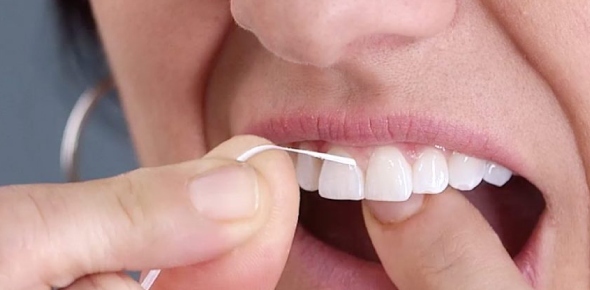Patients with aggressive periodontitis and other forms of perio (other...
Which of the following characteristics reflect that of an infrabony...
A patient complains of soreness in the jaw on waking in the morning....
In health, the gingiva is pink in color. Red tissue is a change that...
Which one of the following radiographic structures is described as a...
Which one of the following conditions is best treated with a night...
Which characteristics are that of a suprabony pocket?
Which one of the following healing responses is seen in gingivitis...
When complete removal of debris is not possible with non-surgical...
Which one of the following periodontal changes can be seen on...
The position of the gingival margin is apical to the CEJ when it . . .
Which of the following helps determine success after periodontal...
___________ instruments are the ideal shape to adapt to root surfaces
Occlusal trauma in combination with chronic inflammatory periodontitis...
The normal crest of interproximal bone is located at a level
A patient has returned for a 2-week follow-up visit after periodontal...
Match the following
Which one of the following definitions pertains to primary occlusal...
Arteries that supply blood and lymphatics to the free gingiva...
Localized rinses are not as effective because they do not get into the...
___________ instruments are beneficial for plaque and deposit removal,...
Which of the following limits the effectiveness of nonsurgical...
Which one of the following features does the computed tomographic...
Which of the following is one of the 3 ways to treat a pocket?...
The position of the gingival margin often changes in disease. The...
Which of the following best measures the severity of periodontal...
In health, the interdental papilla is pointed. In disease, the...
Which one of the following structures is involved in the attachment of...
In health, the tissue fits snugly around the tooth. In health, the...
Guided Tissue regeneration (GTR) focuses on the isolation or exclusion...
Which one of the following benefits is seen after subgingival...
All of the following parts of the periodontium are affected by...
If we refer a patient to a periodontist, why must we still see them...
Which one of the following healing responses is seen in periodontitis...
Which characteristics are that of a gingival pocket...
At which one of the following areas is the width of attached gingiva...
What is the purpose of a gingival curettage?
Which of the following is not a bacteria associated with perio? (I did...
After non-surgical periodontal therapy, the greatest amount of healing...
In disease, the gingival margin meets the tooth in a tapered edge. In...
Most patients are very knowledgeable about the characteristics of...
Which of the following limits the effectiveness of nonsurgical...
All of the following structures are avascular except one. Which one is...
Which of the following is a potential issue with tetracycline?
Cells coming from which one of the following structures is required...
A bulbous papilla is one that is missing. In disease, a papilla may...
The radiographic evaluation of alveolar bone loss associated with...
Upon completion of non-surgical therapy, evaluation of treatment...
All of the following are reasons for using radiographs in periodontics...
After non-surgical periodontal therapy healing of the Junctional...
Match the following
Healthy tissue is very firm and not resilient. The tissue can...
Areas of the gingival tissue may have a bluish color in disease. The...
It is highly unlikely (infrequent) that an individual with advanced...
_______ is a well-known anti-microbial
Non-surgical therapy can reduce pocket depths substantially when there...
Which one of the following types of radiographs is used primarily in...
Which one of the following structures directly attaches the junctional...
Which one of the following types of radiographs is best used to...
Which of the following limits the effectiveness of nonsurgical...
Match the following
All of the following types of radiographs are currently used in the...
From the following list, select the items associated with the...
From the following list, select the items associated with biologic...
From the following list, select the items associated with occlusal...
Match the following
Match the following
Which one of the following definitions explains an apparent gain in...
If a person has _______ when the bone level has dropped,...
Which one of the following types of imaging systems is recommended for...
From the following list, select the items associated with secondary...
From the following list, select the items associated with primary...
From the following list, select the items associated with gingivitis
From the following list, select the items associated with the...
Check the following goals of non-surgical periodontal therapy.
From the bone structures listed, select the correct location of the...
















